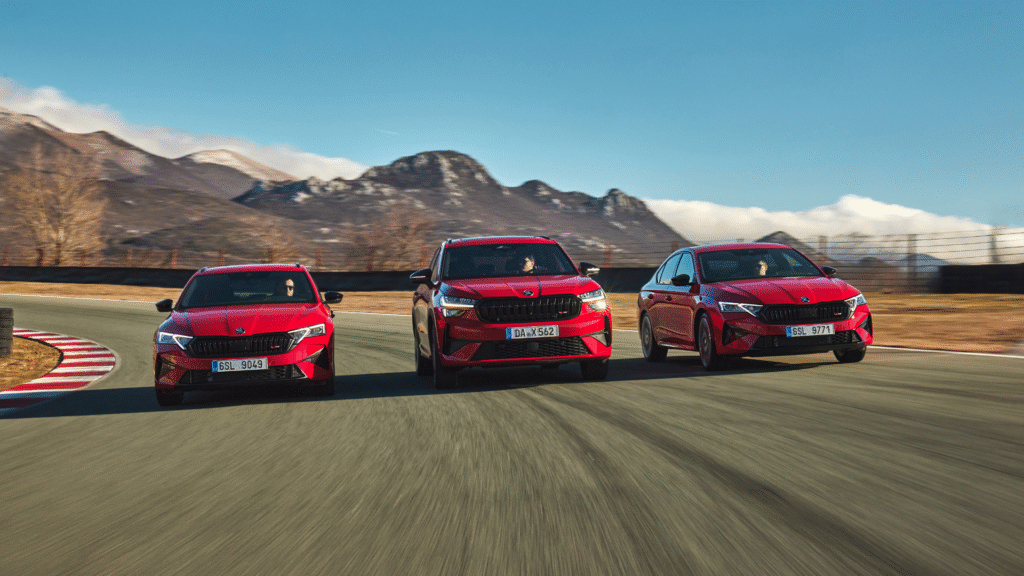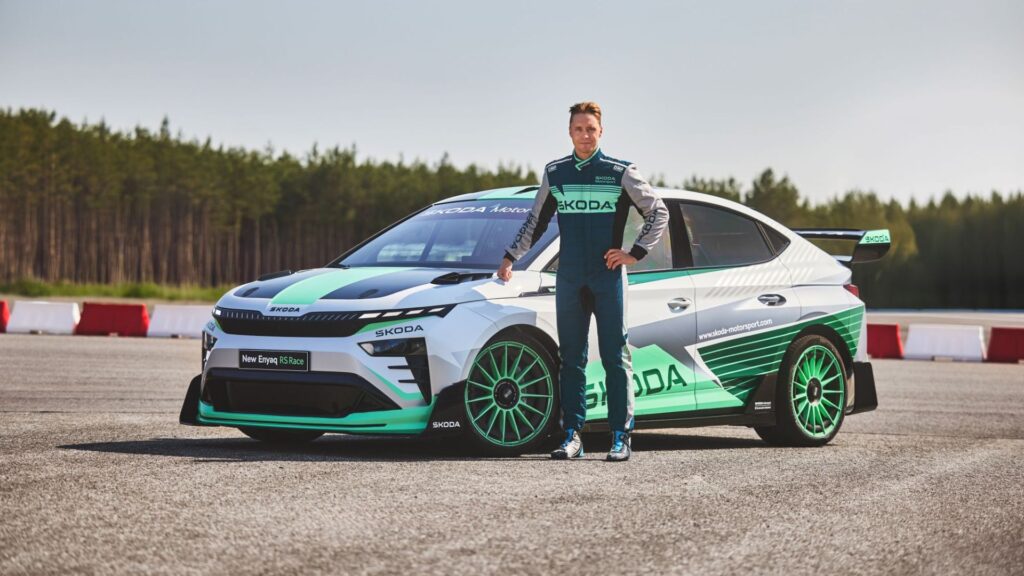When the sketches of the Enyaq RS Race concept were unveiled, the inspiration from the Škoda Fabia RS Rally2 competition special was clear at first glance. And not only in terms of exterior design, but also in terms of technology. Find out how the two cars are similar right now.
The team approached the construction of the Enyaq RS Race car in the same way as they approached the construction of a competition special. The car's platform, with its integrated battery in the floor, was reinforced and a safety frame was welded onto it, designed in accordance with current FIA regulations. So the car is definitely not just for decoration, but meets the strictest safety criteria just like the frame in the Skoda Fabia RS Rally2, giving the crew an authentic experience of the interior of a competition special. The atmosphere is enhanced by racing shell seats and a bespoke bio-composite dashboard. Of course, the hydraulic handbrake lever, which for many drivers is synonymous with the fun of driving a rally car, cannot be missing from a proper competition interior.


Serial drive braced with the emotions of motorsport
The powertrain is a great example of the philosophy behind the Enyaq RS Race concept. The basic drive layout remains unchanged. The Enyaq RS Race uses the battery and both electric motors from the production version of the Enyaq Coupé RS. At this point, the 340 horsepower figure remains the same. However, a significant change is the mechanical self-locking differentials on both axles allowing maximum power and torque to be transferred to the surface under the wheels. Both the design and fit of both axles, and especially the braking system, have also been modified.
Carbon-ceramic brakes are used on both axles, and together with the lightweight wheels, the engineers have achieved a significant saving in unsprung weight, one of the key factors in the car's improved handling. Incidentally, the entire pedal group, with the exception of the clutch pedal, is taken from the competition special.


Sustainable materials key to saving weight
As well as being as close as possible to the competition special in terms of design and handling, one of the objectives in developing the Enyaq RS Race concept was to save weight. The use of sustainable materials based on natural flax plays a key role in this. Compared to carbon, their use dramatically reduces carbon intensity and paves the way for sustainability in motorsport. The Škoda Motorsport team has this material ready for use on the competition car for several interior components and is testing the possibilities for further use. One of the project's development engineers, Miloš Vrba, sums up their use:

'The use of these materials has allowed us to make significant weight savings, but it is also a demonstration that there are materials that can make motorsport more environmentally friendly without major compromises. Their production process is similar to that of carbon composite, but they are entirely natural-based, which is very important for the Enyaq RS Race project. We have used those materials on bumpers, the wing, roof, fenders, and sills and in the interior of the car."
It's clear from this taster of the technology that the Enyaq RS Race is not just a design study. It is a concept that demonstrates in a brilliant way the combination of a production car and the engineering skills of the Skoda Motorsport team, not only from a technical perspective, but also in terms of one possible route to a sustainable future for motorsport.
Are you curious about the impressions of any of the competing drivers? Actually, so are we: coming soon; part three of our series; bringing you more information about the concept. Stay tuned.














